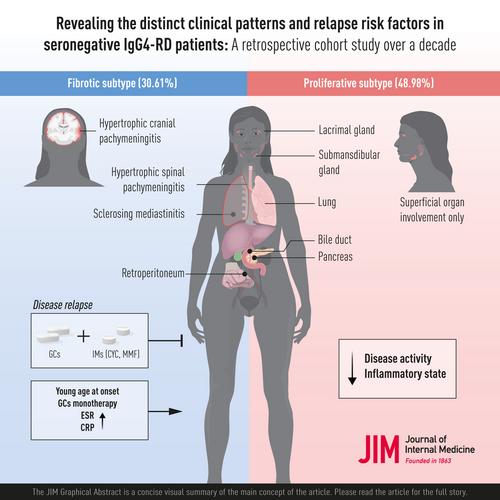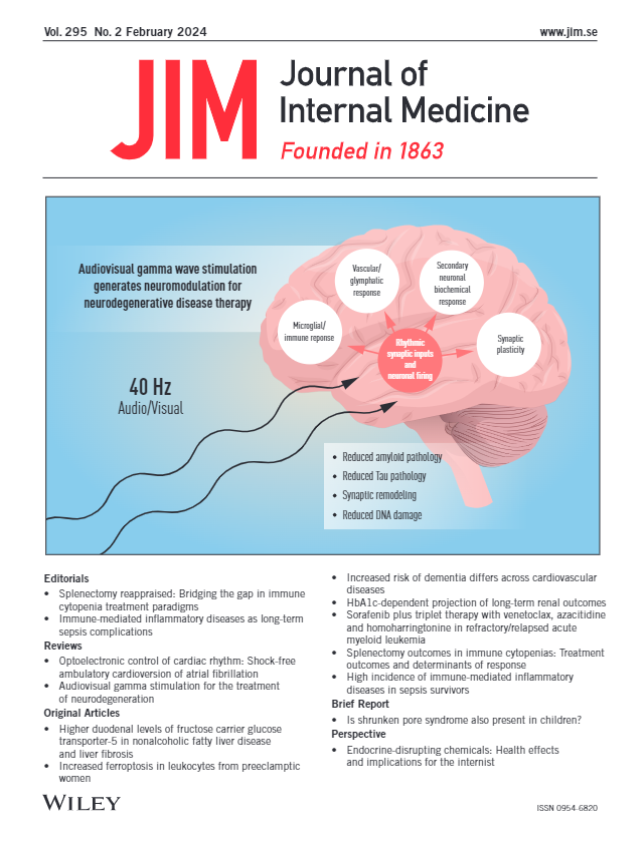Revealing the distinct clinical patterns and relapse risk factors in seronegative IgG4-RD patients: A retrospective cohort study over a decade
Abstract
Objectives
Our study aimed to investigate the distinct clinical patterns of seronegative IgG4-related disease (IgG4-RD) patients.
Methods
We retrospectively enrolled 698 treatment-naïve IgG4-RD patients in this study. Patients were divided into four different subgroups according to their baseline serum IgG4 levels. The distinct clinical patterns of seronegative IgG4-RD patients were revealed through the comparison of baseline clinical data and disease prognosis among the different subgroups. COX regression analyses were used to investigate the risk factors for disease relapse and to construct the nomogram model.
Results
Seronegative IgG4-RD patients account for a minority of IgG4-RD patients (49/698, 7.02%). The proportions of seronegative IgG-RD patients in our study and several Asian cohorts were significantly lower than those of the European and American cohorts. Seronegative IgG4-RD patients got lower serum IgG levels (p < 0.0001), lower eosinophil count (p < 0.0001), lower serum IgE levels (p < 0.0001)), lower IgG4-RD responder index (RI) scores (p < 0.0001), and fewer affected organ numbers (p < 0.0001) compared with other subgroups, whereas they were more likely to manifest fibrotic type with some special organ involvement. Younger age at onset, GCs monotherapy, elevated C-reactive protein level, and elevated erythrocyte sedimentation rate level are the risk factors for the disease relapse of seronegative IgG4-RD patients. An effective nomogram model predicting disease relapse of seronegative IgG4-RD patients was constructed. Seronegative IgG4-RD patients with scores >84.65 at baseline were susceptible to suffering from disease relapse.
Conclusions
Distinct clinical features and multiple risk factors for disease relapse of seronegative IgG4-RD patients have been revealed in this study. A nomogram model was constructed to effectively predict disease relapse during the follow-up period.


 求助内容:
求助内容: 应助结果提醒方式:
应助结果提醒方式:


